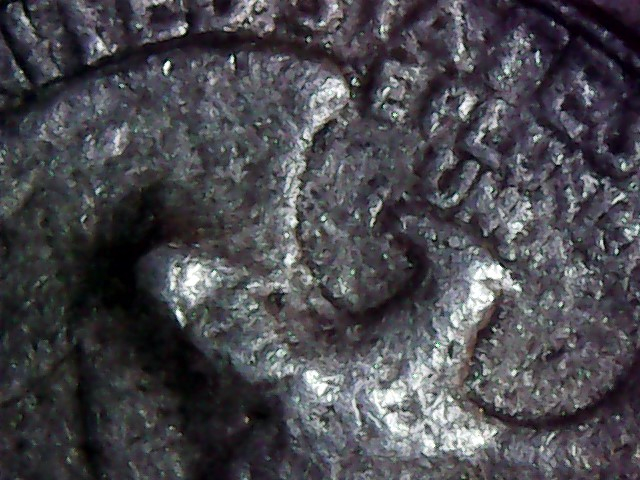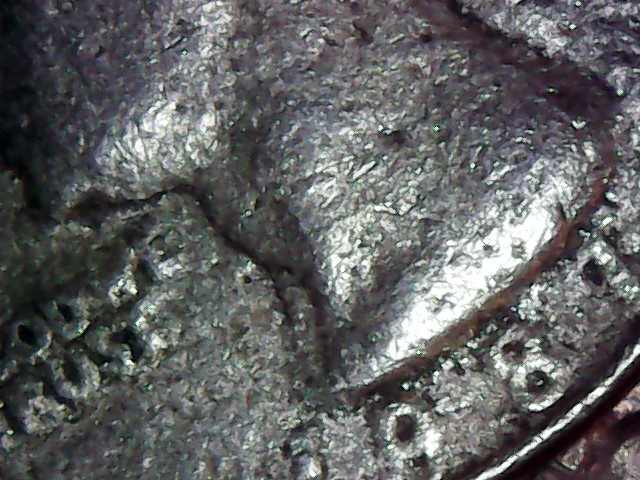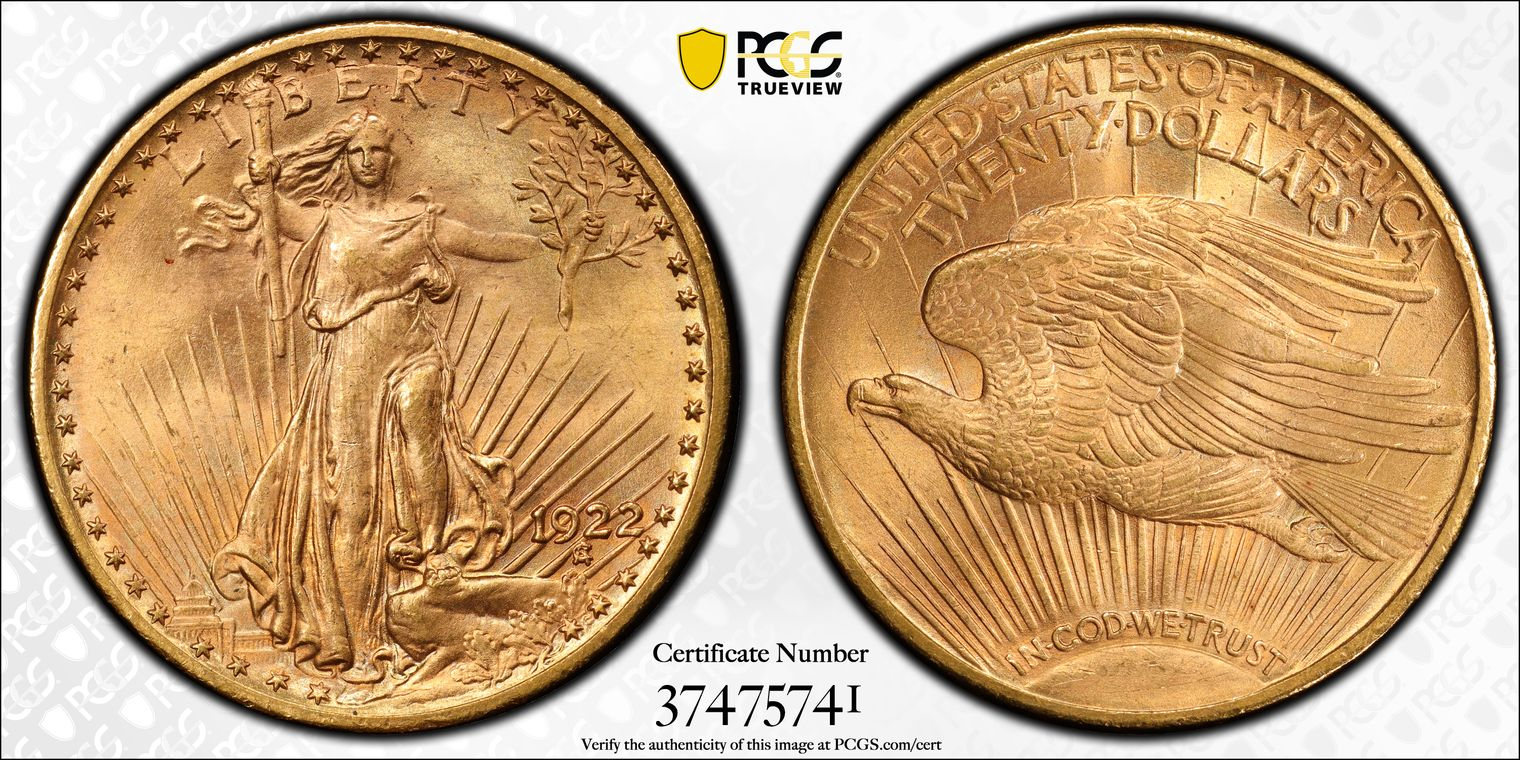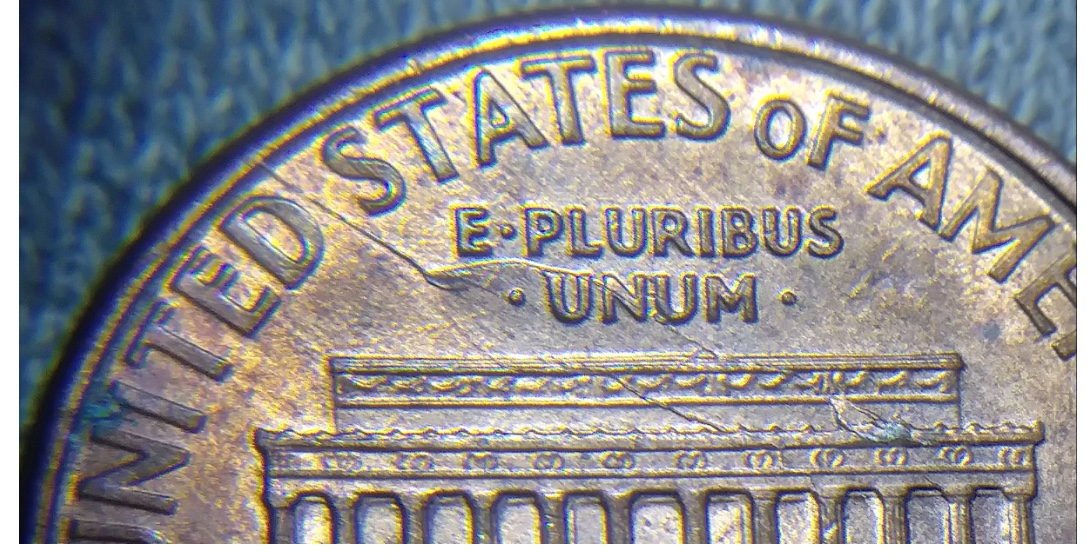Thank you all for the shares! Absolutely wonderful Seeing them all! Wasn’t expecting so many old coins. Looks like I need to get with the program. I can’t compete with those great die cracks!
A die crack barely visible in its earlier stages,
starts from the top of the V, shows between the first and second digits of the date
and extends to the inner border below the second E.
@1630Boston said:
A die crack barely visible in its earlier stages,
starts from the top of the V, shows between the first and second digits of the date
and extends to the inner border below the second E.
Numismatist. 50 year member ANA. Winner of four ANA Heath Literary Awards; three Wayte and Olga Raymond Literary Awards; Numismatist of the Year Award 2009, and Lifetime Achievement Award 2020. Winner numerous NLG Literary Awards.
I would like to see the obverse for my study of 1922-D cents. Watersport informs me that it is a fairly normal obverse with a fairly normal D. I want to see if it has a clash mark on the obverse corresponding to the clash mark seen here that runs from the bases of the CE of CENT up to the E of EPU.
TD
Numismatist. 50 year member ANA. Winner of four ANA Heath Literary Awards; three Wayte and Olga Raymond Literary Awards; Numismatist of the Year Award 2009, and Lifetime Achievement Award 2020. Winner numerous NLG Literary Awards.
Received 2 in pocket change tonight , Im guessing this one is due to ,...gas bubbles?
The second one is among the missing, as i was moving around in the car.
Its in there though, and looks somewhat brittle in the center, obverse, US quarter.
The 1840 V-6 half dime has a similar "top to bottom" crack; eventually with an intersecting horizontal crack.
This is a very nice example - one of my collaborator's favorite coins.
@ifthevamzarockin
Said:
"I don't know if I just need some sleep or if it is the photo but that looks a lot more like a strike-thru to me. not a crack"
That is what I thought when I first saw it. After looking at it under a 30x Stereoscope, the "spear" was raised. If it were a struck-thru, the spear would be incused.
This image might help:
The field to device perspective is tough with black, white, and gray. This is a shot of the detail at a slightly tilted angle. Sorry, with my equipment, any greater angle blows the focus and Depth of Field.
It could be possible that a shard of metal made a "struck through" image on the prior coin and simultaneously cut into the die during the press. That shard must have been made of hardened steel to score a Working Die. I have never seen a die crack quite like this so who knows? Thanks for the comment.
@Intueor said:
...
It could be possible that a shard of metal made a "struck through" image on the prior coin and simultaneously cut into the die during the press. That shard must have been made of hardened steel to score a Working Die. I have never seen a die crack quite like this so who knows? Thanks for the comment.
Although it is raised, it does seem very smooth and fairly straight, compared with normally irregular die cracks.
It also does not intersect the edge of the die, like pretty much all die cracks do.
So it could be called a "die gouge" or a "die line".
Your theory for its possible origin is fairly good.
Another possibility is that the edge of a tool or heavy object impacted the die.
But it is such a long and not completely straight line that I don't think this is very likely.
@Insider2 So it could be called a "die gouge" or a "die line".
Yes, either of these is possible. The thing that puzzled me is the "intersection point" of the crack and the flag design. If it were a crack, one would think there would be a "gap" in the device. Likewise, there would also be a gap if it were a gouge or other die damage. Below, in the closeup of the intersections, in the upper intersection, the design runs through the crack as if it were "pressed" into the crack. However, in the two lower intersections there is a gap in the device as would be expected. That is how I came up with the shard explanation. The design element at the first intersection must have been set deeper in the die so the shard score did not reach the bottom of the incused design feature. As always, your input is appreciated.
I was kinda hoping that someone else would examine their Legion halves to see if there is a mate. It is hard to believe that such obscure die damage was discovered after the first strike and the piece was allowed to circulate. There must be others out there in possibly varying states of definition.
Ok, This is bordering on hijacking the OP's thread so no more on this. No offense was intended.
Comments
Here’s an infamous die crack on an 1807 Bust Half that led to a very popular name for this die variety.....the Bearded Goddess.
Dave
My pride and joy
Thank you all for the shares! Absolutely wonderful Seeing them all! Wasn’t expecting so many old coins. Looks like I need to get with the program. I can’t compete with those great die cracks!
This bearded goddess has a thug life eagle!
Sorry, couldn't help myself.
A die crack barely visible in its earlier stages,
starts from the top of the V, shows between the first and second digits of the date
and extends to the inner border below the second E.
Successful transactions with : MICHAELDIXON, Manorcourtman, Bochiman, bolivarshagnasty, AUandAG, onlyroosies, chumley, Weiss, jdimmick, BAJJERFAN, gene1978, TJM965, Smittys, GRANDAM, JTHawaii, mainejoe, softparade, derryb, Ricko
Bad transactions with : nobody to date
I like die breaks. Here's the reverse of a 1795 half dollar O-107a
Pacific Northwest Numismatic Association
Here are a few, if my post works.
Jb-rarities.com
IG: jb_rarities
Now you're just showing off...........
DOES ANYBODY KNOW WHERE THIS COIN IS TODAY?
I would like to see the obverse for my study of 1922-D cents. Watersport informs me that it is a fairly normal obverse with a fairly normal D. I want to see if it has a clash mark on the obverse corresponding to the clash mark seen here that runs from the bases of the CE of CENT up to the E of EPU.
TD
Interesting Modern "Spear" Die Crack:
That’s a big crack for a modern coin
Collector
91 Positive BST transactions buying and selling with 56 members and counting!
instagram.com/klnumismatics
Received 2 in pocket change tonight , Im guessing this one is due to ,...gas bubbles?

The second one is among the missing, as i was moving around in the car.
Its in there though, and looks somewhat brittle in the center, obverse, US quarter.
I don't know if I just need some sleep or if it is the photo but that looks a lot more like a strike-thru to me. not a crack
The 1840 V-6 half dime has a similar "top to bottom" crack; eventually with an intersecting horizontal crack.
This is a very nice example - one of my collaborator's favorite coins.
No saints yet so...I'll toss one in. (1922 MS 65+)

My Saint Set
@ifthevamzarockin "
"
Said:
"I don't know if I just need some sleep or if it is the photo but that looks a lot more like a strike-thru to me. not a crack
That is what I thought when I first saw it. After looking at it under a 30x Stereoscope, the "spear" was raised. If it were a struck-thru, the spear would be incused.
This image might help:
The field to device perspective is tough with black, white, and gray. This is a shot of the detail at a slightly tilted angle. Sorry, with my equipment, any greater angle blows the focus and Depth of Field.
It could be possible that a shard of metal made a "struck through" image on the prior coin and simultaneously cut into the die during the press. That shard must have been made of hardened steel to score a Working Die. I have never seen a die crack quite like this so who knows? Thanks for the comment.
1994 Lincoln Retained Interior Die Break
Although it is raised, it does seem very smooth and fairly straight, compared with normally irregular die cracks.
It also does not intersect the edge of the die, like pretty much all die cracks do.
So it could be called a "die gouge" or a "die line".
Your theory for its possible origin is fairly good.
Another possibility is that the edge of a tool or heavy object impacted the die.
But it is such a long and not completely straight line that I don't think this is very likely.
Already posted. Close up:
@Insider2
So it could be called a "die gouge" or a "die line".
Yes, either of these is possible. The thing that puzzled me is the "intersection point" of the crack and the flag design. If it were a crack, one would think there would be a "gap" in the device. Likewise, there would also be a gap if it were a gouge or other die damage. Below, in the closeup of the intersections, in the upper intersection, the design runs through the crack as if it were "pressed" into the crack. However, in the two lower intersections there is a gap in the device as would be expected. That is how I came up with the shard explanation. The design element at the first intersection must have been set deeper in the die so the shard score did not reach the bottom of the incused design feature. As always, your input is appreciated.
I was kinda hoping that someone else would examine their Legion halves to see if there is a mate. It is hard to believe that such obscure die damage was discovered after the first strike and the piece was allowed to circulate. There must be others out there in possibly varying states of definition.
Ok, This is bordering on hijacking the OP's thread so no more on this. No offense was intended.
Looks like surgery was performed.
Did you find this? Or bought? Doesn’t matter! Best penny I have seen for a die crack being this new.
I found it roll searching a while back
So many fine examples here!
Sometimes, it’s better to be LUCKY than good. 🍀 🍺👍
My Full Walker Registry Set (1916-1947):
https://www.ngccoin.com/registry/competitive-sets/16292/